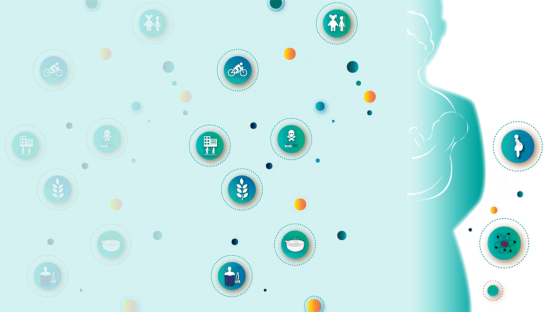Interested participants have until 27 May to submit abstracts for the Symposium on Understanding the Double Burden of Malnutrition, a tri-agency initiative of the IAEA, World Health Organization (WHO) and UNICEF to take place 10-13 December 2018 at the Vienna International Centre. The symposium will contribute to strengthening implementation of the work programme of the UN Decade of Action on Nutrition at the country level.
The double burden of malnutrition describes a complex set of conditions in a country, community or even single individual, in which multiple, seemingly paradoxical forms of malnutrition exist at the same time. Examples could include an individual with iron-deficiency anemia and also obesity, or an extremely undernourished child with an overweight mother. This condition affects at least a quarter of countries worldwide, primarily low- and middle-income countries. In conditions of severe food insecurity, the food that is available is often not of quality, resulting in simultaneous adult over-nutrition and child under-nutrition.
Representatives of Member States in the areas of agriculture, nutrition, public health and the environment will attend the symposium to share their experiences battling the double burden of malnutrition with the overarching goal to better understand what causes the phenomenon and how to successfully prevent and mitigate it.
“I see the Symposium as an excellent venue to combine both the science and public health aspect of the double burden of malnutrition and how both fields can benefit from each other,” said Anthony Calibo, a Division Chief at the Philippines’ Department of Health. “The outcomes will be able to guide policy makers and government agencies how they can effectively assess the double burden of malnutrition and contribute to the Sustainable Development Goals, the Global Targets for Nutrition 2025 and the UN Decade of Action for Nutrition.”
In particular, the symposium will highlight work that the IAEA contributes to in the use of stable, i.e. non-radioactive, isotopes to combat the double burden of malnutrition.
“Using stable isotope techniques is a big step forward in the practical assessment of malnutrition, providing accurate data about exposure (human milk intake) and outcome of nutrition interventions (body composition and physical activity),” said Cornelia Loechl of the IAEA’s Division of Human Health. Stable isotopes have a wide variety of uses in the nutrition field, including measuring the absorption of certain vitamins and minerals, as well as nutrient retention and bioavailability, which is the fraction of a nutrient our body absorbs and uses for growth and metabolism.
“The symposium will strengthen our understanding of how to tackle malnutrition by sharing recent research findings as well as experiences with the implementation of relevant interventions, programmes and policies,” Loechl continued.
In the battle against malnutrition, scientists use stable isotopes primarily as an assessment tool, though that is just one overarching theme the symposium will address:
- Epidemiology: Prevalence, causes and consequences of the double burden of malnutrition.
- Biology: Biological mechanisms contributing to the double burden of malnutrition.
- Assessment: How to assess the double burden of malnutrition in individuals and populations.
- Interventions: From biology to interventions targeting the double burden of malnutrition.
- Policy implications: From biology to policies addressing the double burden of malnutrition.
Kimberly Ashby-Mitchell of the Caribbean Public Health Agency has spent years working on malnutrition issues in small island developing states.
“Addressing malnutrition in all its forms is not the role of any single entity, but rather there must be a multi-sectoral approach aimed to create environments that promote and support healthy eating and active living,” said Ashby-Mitchell. “The collaboration of the IAEA, UNICEF and WHO is a testament to this idea. Additionally, in order to combat the double burden of malnutrition we must explore and utilise the most effective and efficient methods and tools. While the use of stable isotopes in combatting malnutrition is not widespread in resource-poor settings, evidence suggests that it can be applied successfully. It is hoped that after this symposium, the use of such methods will be explored further and where feasible be integrated into nutrition care plans.”
There is no registration fee, and participants can apply through the online pre-registration form. Abstracts related to the themes of the symposium can be submitted through INDICO.






